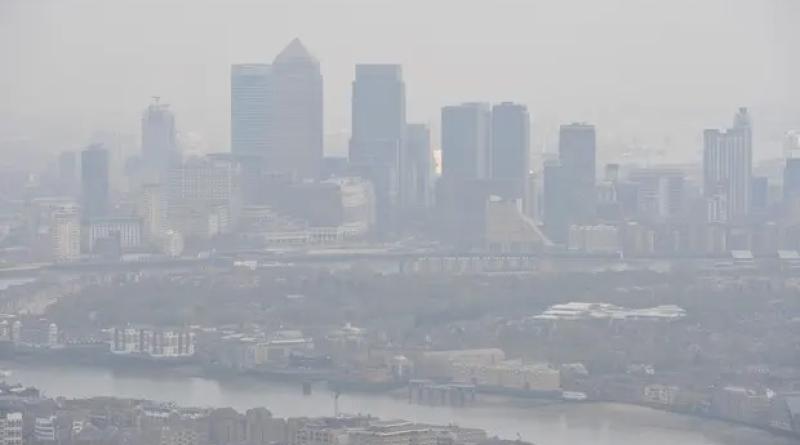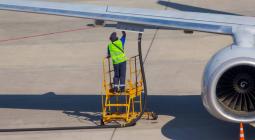Europe ‘failing its children’ on air pollution, EEA says

Europe is failing its children when it comes to air pollution, exposing nearly all children across the continent to air that falls below healthy standards and delaying the clean-up of the sources of pollution, research has found.
Breathing dirty air causes the premature death of at least 1,200 children across Europe each year, and many thousands more are afflicted with physical and mental health problems that could have lifelong impacts, according to the latest assessment of air pollution by the European Environment Agency.
Gerardo Sanchez Martinez, an expert in environment and health at the EEA, said: “You can’t think about children as little adults, when it comes to air pollution. They receive more pollution, and it starts in the womb and continues in kindergarten and onwards. We are failing our children on air pollution.”
Children are particularly susceptible to dirty air, as pollutants can have an impact on their development that is permanent. The impacts begin before birth, with studies linking pollution to low birth weight and premature birth.
Exposure to high levels of pollutants in childhood have been shown to inhibit lung capacity, cause asthma, lead to higher levels of respiratory disease and ear infections, and increase the risk of allergies – and they may also affect brain development.
Children are more exposed to filthy air than adults because they have a faster breathing rate, are closer to the ground and are outdoors more. About 110,000 disability adjusted life years are lost across Europe each year in people under the age of 18, according to the study published on Monday by the EEA.
Hans Bruyninckx, executive director of the EEA, urged countries to do more. “Air pollution levels across Europe are still unsafe and European air quality policies should aim to protect all citizens, but especially our children, who are most vulnerable to the health impacts of air pollution,” he said. “It is urgent that we continue to step up measures at the EU, at national and local level, to protect our children, who cannot protect themselves. The surest way to keep them safe is by making the air we all breathe cleaner.”
Reducing the sources of air pollution – including road traffic, coal and solid fuel burning, and industrial emissions, is key – but action should also be taken to reduce the specific risks to children, according to the EEA. These could include putting clean air zones around schools, where traffic would be restrained and idling engines prohibited. Local authorities and schools should also look at planting trees, ivy screens and hedge fences around playgrounds.
Switching to back roads for walking to school can also help, and better design of school and childcare facilities, with good ventilation and filters, can reduce children’s exposure to pollutants, indoors and outdoors.
The UK was not included in the EEA’s assessment, as the UK government has opted out of EEA membership post-Brexit, even though several other non-EU countries – including Norway, Switzerland and Iceland – are members. The EEA’s publication, entitled Europe’s Air Quality Status 2023, published on Monday, covers 37 countries, including all EU member states and countries such as Turkey, Serbia, Kosovo and Montenegro, and examines air pollutants including particulates, nitrogen dioxide, ozone and sulphur dioxide.
Eastern European states came out worst, largely owing to the burning of coal for domestic heating, along with Italy, where industrial pollution in the Po Valley was identified as a key problem.
Across Europe, 97% of the population, of all ages, were exposed to levels of air pollution higher than those deemed safe by the World Health Organization, according to the EEA.
The EU is aiming to limit PM 2.5 (particles that are 2.5 microns or less in diameter) to 10 micrograms a cubic metre by 2030, and nitrogen dioxide (NO2) to 20 micrograms a cubic metre by the same date, actions which should cut premature deaths owing to air pollution by 55% by 2030. WHO guidelines are for 5 micrograms a cubic metre for PM 2.5 and 10 micrograms a cubic metre for NO2.
In the UK, the environment secretary, Thérèse Coffey, said earlier this year that the government would not limit air pollution in line with the EU until 2040, despite expert advice that it was possible to do so this decade.
She said: “We have cleaner air. I want it to be even cleaner. Now, I would have loved to have made our target to achieve 10 micrograms by 2030, not 2040. Many parts of the country already enjoy this, but the evidence shows us that with the best will in the world we cannot achieve that everywhere by the end of the decade, particularly in London.”
But air pollution experts pointed to research by King’s College London and Imperial College London that has shown the UK government could achieve the more stringent targets, which are supported by the public in polls, if it took stronger action on the sources of pollution, which include diesel cars and wood-burning stoves.
cover photo: Smog over London in 2015. In 2023, 97% of the European population, of all ages, are exposed to levels of air pollution deemed unsafe by the World Health Organization, according to the EEA. Photograph: Nicholas.T Ansell/PA





